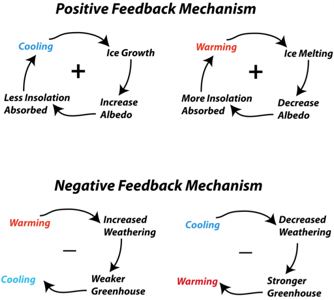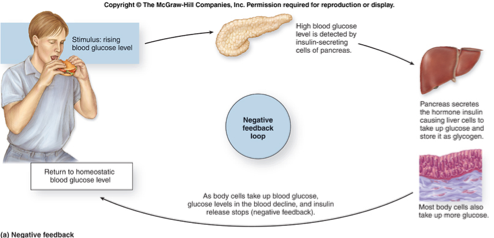Sign up for FlowVella
Sign up with FacebookAlready have an account? Sign in now
By registering you are agreeing to our
Terms of Service
Loading Flow


6. In negative feedback mechanisms, the output shuts off the original stimulus or reduces its intensity. These mechanisms cause the variable to change in a direction opposite to that of the initial change. An example of this is the control of blood glucose levels by pancreatic hormones. To maintain normal metabolism, the body cells need an ongoing supply of glucose which is their main fuel for producing cellular energy(ATP). Blood sugar levels are normally at about 90mg of glucose per 100ml of blood. All negative feedback mechanisms have the same goal which is to prevent severe changes within the body. There are so many variables that need to be regulated throughout the body. In positive feedback mechanisms, the result or response enhances the original stimulus so that the activity(output) is accelerated. The change that occurs proceeds in the same direction as the initial disturbance, causing the variable to deviate further and further from its original value or range. Positive feedback does not usually control infrequent events that do not require continuous adjustments. They can set off a series of events that may be self-perpetuating and that, once initiated, have an amplifying or waterfall effect. These mechanisms are likely to race out of control, and they are rarely used to promote the moment-to-moment well-being of the body.

